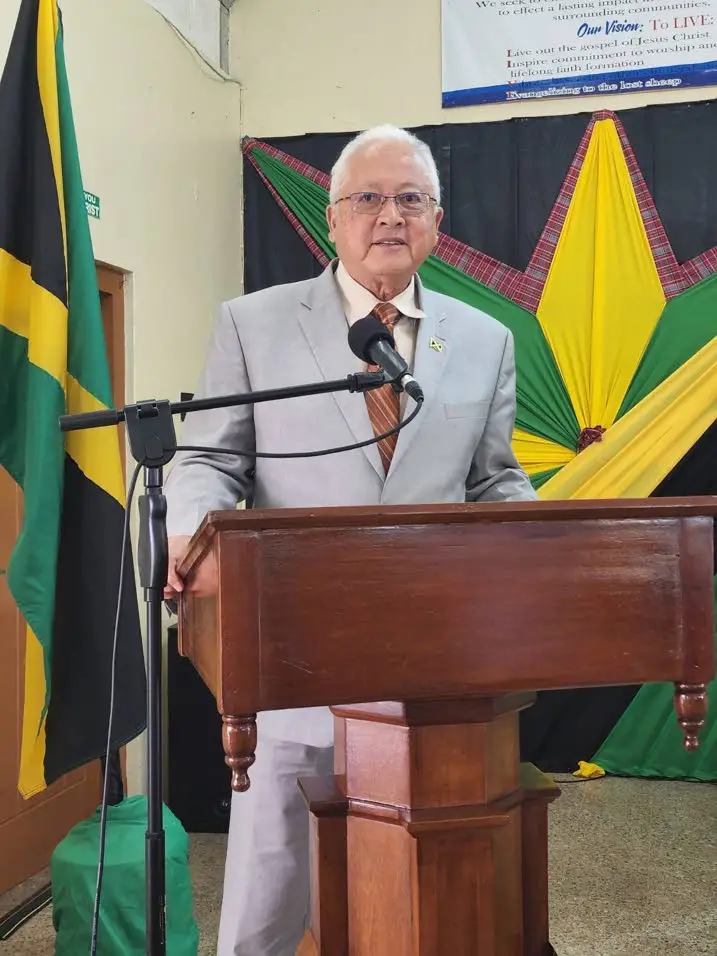
New security measures at Supreme Court
The Security Committee of the Supreme Court has announced sweeping new entry requirements for its Public Building East in downtown Kingston which will impact the public and other court users over the following months as part of measures to enhance safety.
In a notice on the new security policy issued last week, the committee said with a view of ensuring the safety and security of all the users of the court building, the security measures will be implemented/enforced during the current (Hilary) term.
However, the committee said as dialogue with stakeholders continues, the implementation of the new measures will not coincide with the commencement of the Hilary term, thereby allowing more time for all court users to familiarise themselves with the measures.
“The date for implementation will be communicated in short order. All persons seeking to enter the court building are urged to obtain the relevant identification to minimise any inconvenience and delays when attending upon the court. We look forward to your understanding and continued cooperation as we seek to make the Supreme Court building safe and secure for all users,” the committee said.
Under the new measures, entry to Public Building East through the rear entrance, along Temple Lane, will be restricted to judges, court staff, police officers, jurors and attorneys-at-law with all other persons being required to use the main entrance on King Street.
However, attorneys who are not in possession of a General Legal Council (GLC) ID or Government employee ID will not be permitted to use the rear entrance on Temple Lane. They, instead, will have to use the main entrance on King Street as well, where they will be required to show a Government-issued ID and they will be issued with a visitor’s pass restricting them to a particular floor.
“All attorneys-at-law are therefore encouraged to obtain their GLC ID or Government employee ID as this will minimise any inconvenience when they seek to enter the court building and traverse its various floors,” the working group said in the document addressed to all attorneys and court users.
In the meantime, other visitors to the building will now be issued colour-coded passes, based on the floor being visited, thereby restricting visitors to a particular floor.
The notice went on to note that if a visitor has more than one matter on the building and, as such, will need to be on more than one floor, then he/she will need to return to the point that the pass was issued and obtain a new pass that corresponds with the floor that he/she wishes to be on.
The committee, in the meantime, said while there will be a general requirement for visitors entering the court building to provide a Government-issued ID, exceptions will be made for an accused on bail and parties in civil matters.
It said in those instances where these individuals are not in possession of a Government-issued ID, their particulars will be recorded and verification done of their need to be on the building.
“Once verified they will be issued with a visitor’s pass corresponding with the floor that their matter is on. Any other member of the public wishing to enter the court building, who is not in possession of a Government-issued ID, will be required to produce a letter signed and sealed by a justice of the peace (JP) confirming his/her identity together with a photograph certified by the said JP,” the notice stated.
And, effective last Monday, the Jamaica Constabulary Force announced cellphone restrictions for police personnel manning all courts in the downtown Kingston area.
The changes come even as Justice Minister Delroy Chuck, in making the case for closed-circuit television systems in public spaces last month, said he has proposed the installation of cameras in “every corner” of courthouses across the island.
According to the justice minister, the protective measure would serve to “track anyone entering” the precincts and would also act as another layer of security for judges who would be able to check the monitors before leaving their chambers.
“I can assure you that I am now proposing that we should have cameras at every corner of the courthouses so that anyone who comes into the court, we can follow that person throughout, and before a judge comes into the court he can be able to know if there is any problem. The beauty about these cameras, I can look at mine and see what is happening before I go out, it’s a beautiful system,” Chuck stated.
His proposal follows an October incident in which convicted criminal Anthony Williams, otherwise called Pops, vaulted from a prisoner’s dock at the Supreme Court and into the space occupied by the judge before dashing onto the private walkway used by judges and their security detail. Williams then jumped from the corridor, which is on the second floor of the building, onto Tower Street, before escaping.
The 22-year-old, who is already serving time, made the dramatic escape just before being sentenced for illegal possession of firearm and assault at common law. Williams, for whom a manhunt was launched, was still sentenced in absentia to 18 years’ imprisonment.

























